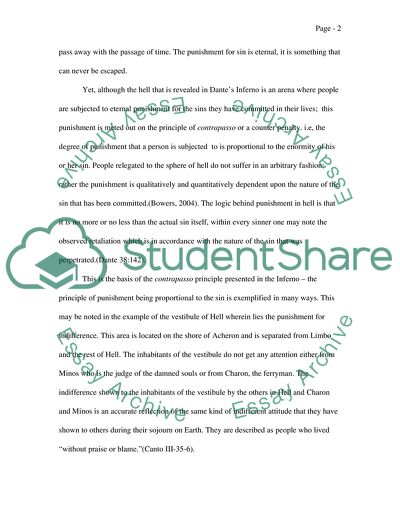Cite this document
(Sin and Punishment in Dantes Inferno Essay Example | Topics and Well Written Essays - 2000 words, n.d.)
Sin and Punishment in Dantes Inferno Essay Example | Topics and Well Written Essays - 2000 words. Retrieved from https://studentshare.org/literature/1711088-the-relationship-between-sin-and-punishment-in-dantes-inferno
Sin and Punishment in Dantes Inferno Essay Example | Topics and Well Written Essays - 2000 words. Retrieved from https://studentshare.org/literature/1711088-the-relationship-between-sin-and-punishment-in-dantes-inferno
(Sin and Punishment in Dantes Inferno Essay Example | Topics and Well Written Essays - 2000 Words)
Sin and Punishment in Dantes Inferno Essay Example | Topics and Well Written Essays - 2000 Words. https://studentshare.org/literature/1711088-the-relationship-between-sin-and-punishment-in-dantes-inferno.
Sin and Punishment in Dantes Inferno Essay Example | Topics and Well Written Essays - 2000 Words. https://studentshare.org/literature/1711088-the-relationship-between-sin-and-punishment-in-dantes-inferno.
“Sin and Punishment in Dantes Inferno Essay Example | Topics and Well Written Essays - 2000 Words”. https://studentshare.org/literature/1711088-the-relationship-between-sin-and-punishment-in-dantes-inferno.


